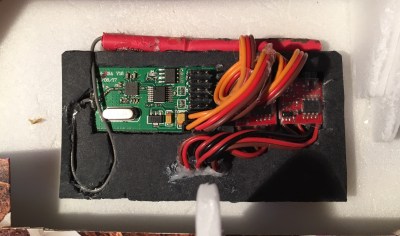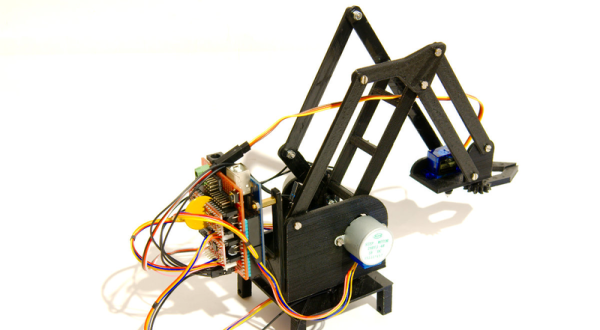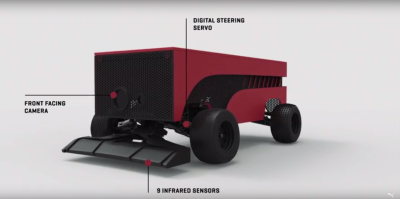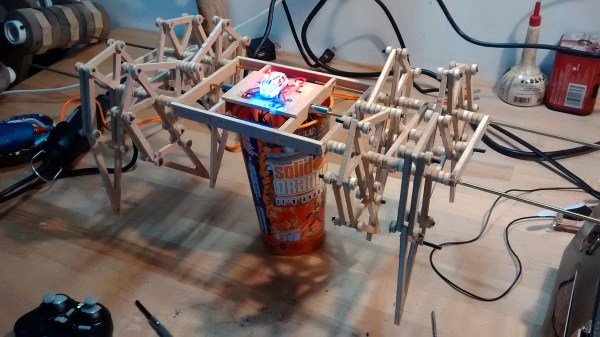Antweight combat robots are really lightweight. [Carter Hurd] used leftover materials to create a dustpan robot with a chomper (comically made from a Krave cereal box) to hold captured competitors in place. The main body is made of foam board. The only metal is in the front wedge which is lifted by a servo to help trap the other robot.
[Carter] fully expects the foam to be eaten by competitors during the match. This led him to position his electronics at the center of the robot to keep it from being damaged. We’ll have to see how well that works. He’s hoping for an advantage over vertical flip weapons since they may simply cut through the foam without getting enough purchase for a flip.
The electronics is on a modular board so it can be easily moved from one robot to another. All that is on the board is the RC receiver and two FingerTech Tiny Electronic Speed Controllers. A battery is slung underneath.
Best of luck for Krave ‘bot eating up the opposition. We’ve seen some other light weight designs in the cardboard competitors from the Columbia Gadget Works makerspace.






















